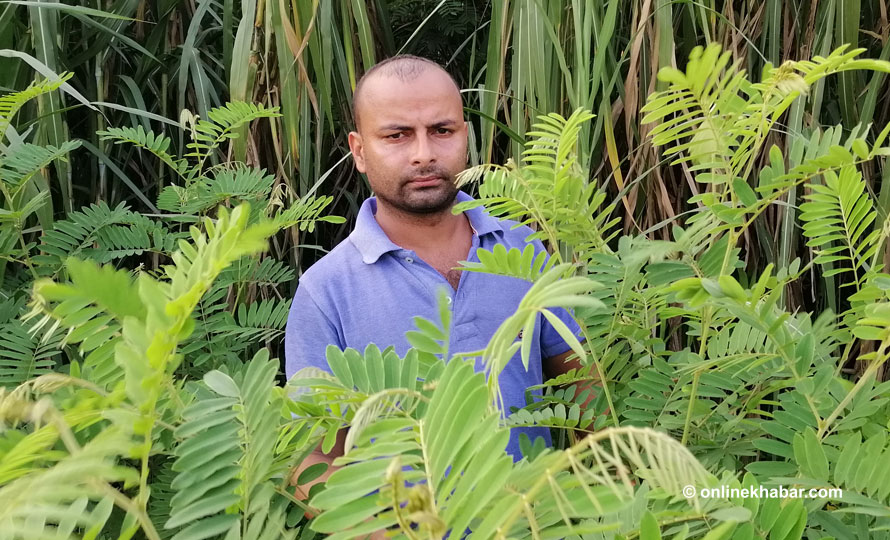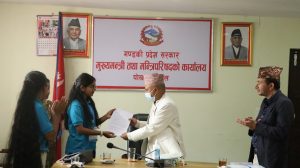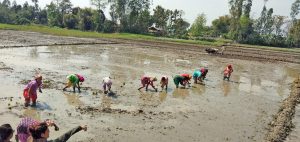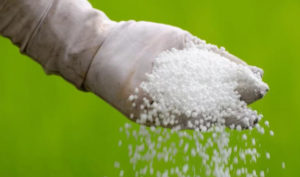Nowadays, there are many farmers who are engaged in commercial animal husbandry and vegetable farming.
However, there are only a few farmers who commercially cultivate grass, without which animal husbandry is not imaginable. Among those few farmers, Bishnu Bhatta, 37, of Gaindakot municipality of Nawalpur (Nawalparasi East) is the one who has started this business of cultivating and selling grass.
The way he has multiplied his income recently is so attractive that many people come to him to learn how to grow grass better and replicate the business model.
Lucrative profit
Two years ago, he started grass cultivation on a 145,800 square foot wide piece of land targeting livestock farmers. By now, his business has expanded in the area of 874,800 square feet.
Bhatta pays around Rs 600,000 a year for the rented land and earns around Rs 10 million by selling various species of grass and their seeds and saplings. His Shree Swasthani Grass Resource Center produces 23 species of grass seeds and saplings.
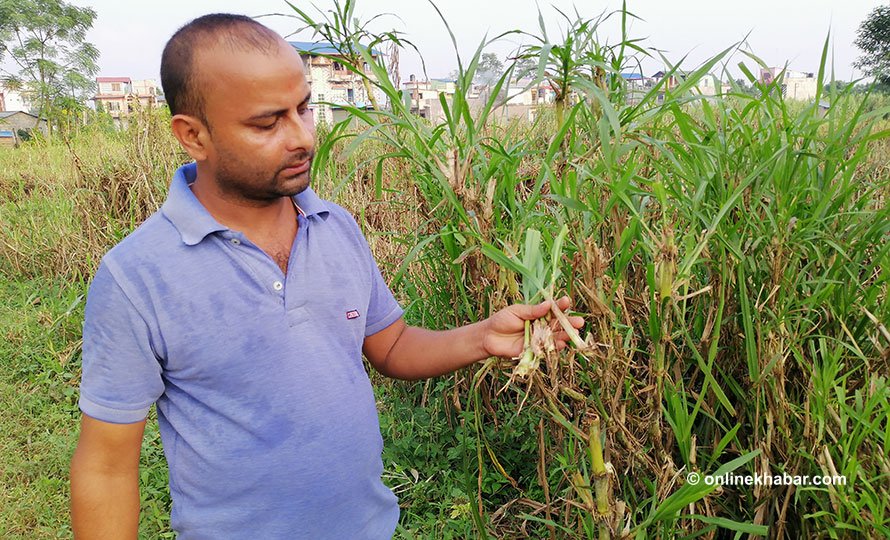
About 15 to 20 farmers come to his nursery daily to get seeds and saplings. He had established the nursery with an investment of around Rs 6 million. The grass cultivated by him has already reached 60 districts of the country.
Bhatta’s nursery has grass plants ranging from Re one to Rs 20. He has made a profit of Rs two million to Rs three million by selling grass worth Rs 10 million a year.
“I have invested all my earnings here until now. I have repaid the loan with some saved amounts. Now I am debt-free,” says Bhatta. His farm has 12 workers. There is a demand for around 80,000 fodder tree seedlings in his grass resource centre.
The Mukundapur area near Bhatta’s farm is becoming a hub for commercial cattle raising. Here, farmers now cultivate their own grass. Most of them have cultivated improved varieties of grass around their houses. Bhatta says that the cost of milk production can be reduced from the grass as the price of feed grains increases day by day.
In his farm spread in about 874,800 square feet of land, he has only planted super Napier, a species of a fodder tree, in about 583,200 square feet of land. Bhatta informs this grass, which can be grown in any place in any season, is very useful for livestock farmers.
Adding to this, he continues, “This grass can be very useful in minimising the expenses of livestock farmers. Right now, about 65% of the cost is spent on cattle’s feed. This cost can be reduced by 20% to 30% and the profit margin will be more for the farmers.”

Inspiration
Just like many Nepalis, Bhatta’s parents were farmers. They used to do vegetable and livestock farming for a living. In 1999, a rhino gored his mother while she was on the other side of the Narayani river to collect grass.
After this, he had to do all the household works alongside his study. That is why he could not study after the intermediate level. Then, in 2008, he went to Malaysia and worked for a cable company.
He returned to Nepal after working for four years there, with some 1.6 million rupees in hand. He was willing to do something in his own homeland after the return. Initially, he planned to do goat farming and went to observe a farm in Mukundapur.
After seeing the farm there, he was convinced with his own idea of goat farming. He started a farm with 30/35 goats by taking a loan from his friends. While raising goats, he started cultivating grass also.
According to Bhatta, he was attracted to grass cultivation when he came to learn that livestock farmers around his village were spending a lot of amounts they earned by selling milk on the cattle’s feed grains. He briefs, “Everybody does raise cattle here, for which grass is essential. So, to reduce the cost of cattle farming, I was attracted to grass cultivation.”
“Also, I started this so that no one would get injured by a rhino just like my mother while fetching grass.”
Inception
In the beginning, he brought some grass saplings from the nearby grass resources management centre. He even went to Kavre, Kathmandu and Chitwan for collecting seeds and saplings of grass.
For managing finances for his farm, he approached many people and institutions for the loan. Bhatta narrates, “I wandered in many places. The bank did not believe me for the loan even after showing them my land. I turned furious with the bankers then. Even the well-educated ones humiliate us (farmers).”
Finance was not only an obstacle. There were many people who said he should not take a risk as he was into foreign employment. There was also difficulty in fertiliser management.
But, forgetting everything, he stuck to it. Today, he is happy to be able to send grass seeds and saplings to more than 60 districts in the last two years alone.
He promises to provide grass saplings without keeping any profit margin to those youth who seriously want to do grass cultivation. “I am not at all looking for profit. Come back to the homeland, youth from abroad. I will help you. I am ready to support you,” assures Bhatta.
“If we work here as hard as we work in the abroad, we can earn a lot.”
Conservation of traditional species
Bhatta has been cultivating air potato (known as gittha in Nepal), which is gradually being forgotten by the Nepali society, for the past two years in his farm. His 145,000 square foot wide land is now covered by the vines of gittha.

“I am worried about the disappearance of my grandfather’s life-saver in a difficult situation. I want to explain the importance and the real test of gittha to the next generation as well,” says Bhatta.
He argues that gittha is many times better than imported potatoes. According to him, gittha is also beneficial for diabetics and high blood pressure patients who cannot eat potatoes.
He started githta cultivation from three kilograms and produced 10 quintals of seeds last year. He targets to produce 25 to 30 quintals next year. He thinks this vegetable also has a good market in Nepal.
Besides gittha, Bhatta has also planted black sugarcane in the 9,112.5 square feet area of land. His goal is to sell the seeds of black sugarcane. “As black sugarcane is also gradually disappearing, in order to conserve it, I brought seeds from Gorkha and planted them,” says Bhatta, “The market is also good. I make seeds and sell them to young farmers.”
He has also started farming elephant foot yam (hattipau pindalu) also to conserve and promote the species. Bhatta also states that he is planning to build a museum by preserving old and endangered agricultural products.
‘Will not take government grant’
As soon as one enters the office room of Bhatta’s farm, a slogan appears on the wall that states, “I am such a farmer who wants to give a subsidy to the state not ask for a subsidy from the government.”
Bhatta boasts, “I don’t take grants, I don’t even want to take them.” He then sadly says, “Everyone thinks of taking grants from the government. None thinks of giving back to the country..”
According to Bhatta, if one works hard, one can earn enough profit in agriculture also. Being stable in his belief, he rejected many grants offered by the municipality.
Meanwhile, he also has some dissatisfactions with the government procedure to distribute grants to farmers. Like many farmers, he also suspects some agricultural officials might have been involved in misappropriation of the grants.
Bhatta asserts that the government subsidy has not been received by real farmers; instead, those with access and contacts have received it.
Need of National Agricultural Army
Bhatta argues that in order to make the country fully self-reliant in agriculture, there is the need for a national agricultural army.
He views that just how the government recruits capable youth in the Nepal Army, the government should recruit able youth in the agricultural army and provide them with the necessary training and proper management of land, irrigation, fertilisers, agricultural tools and crops in suitable places.
He stresses on prioritising the youth who have gone abroad for making them agricultural soldiers by calling them back.
“A country is not made by keeping only combat troops; agricultural troops are involved in production with the training, skills, efficiency and everything, which will ultimately increase the national production,” opines Bhatta.



